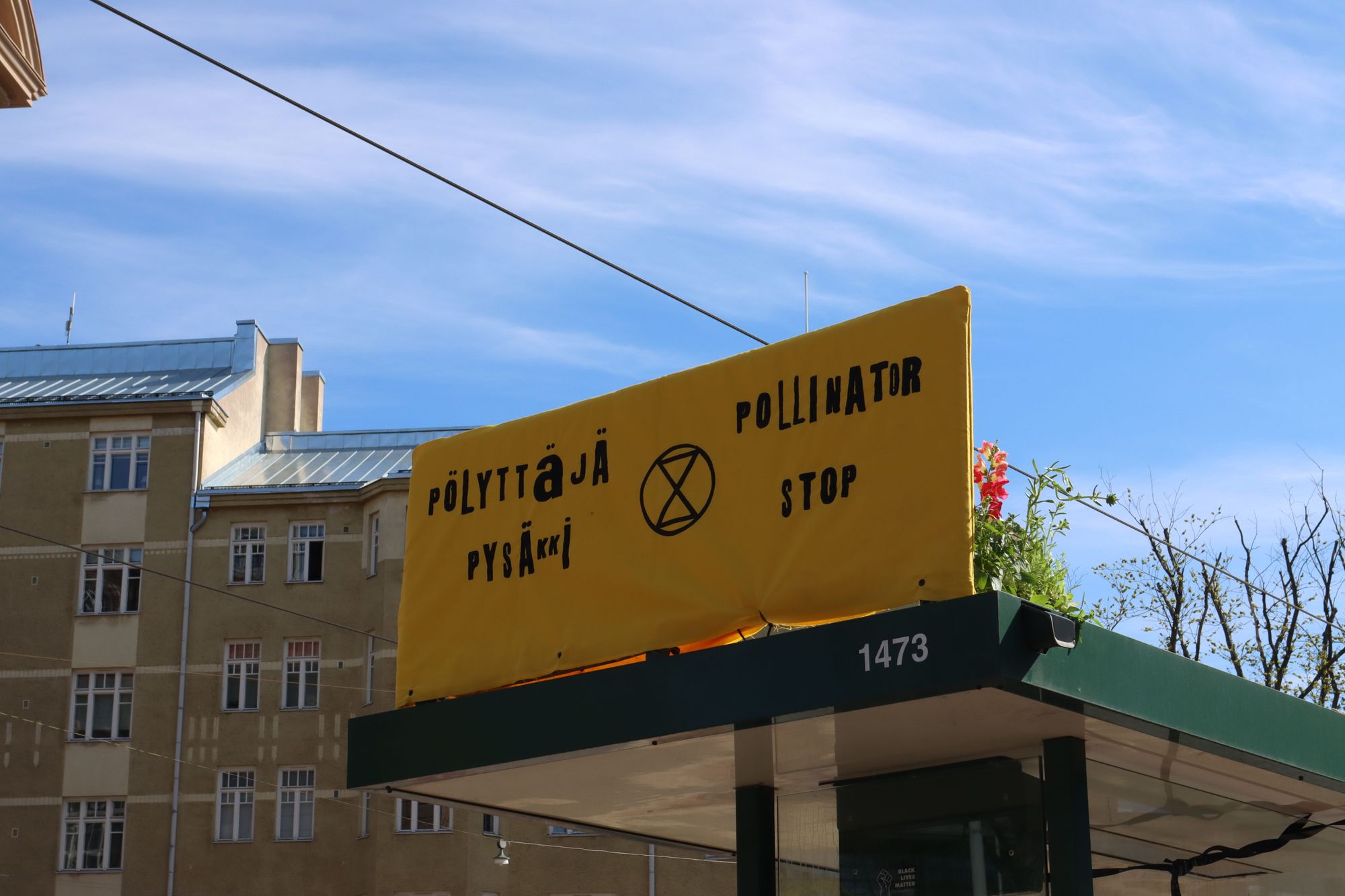Nyt jos koskaan on herättävä hyönteiskatoon! Wake up before the insects are gone!

(In English below)
Tiedätkö mitä yhteistä on puolukalla, variksenmarjalla ja mustikalla? Nämä herkulliset ja vapaasti poimittavat vitamiinipommit tarvitsevat pölyttäjiä tuottaakseen marjoja. Vuonna 2019 julkaistu tutkimus kertoo käynnissä olevan vakava globaali hyönteispopulaatioiden heikkeneminen. Hyönteispölyttäjät eivät ainoastaan auta kasvien pölytyksessä vaan myös määrittelevät sadon laadun ja määrän. Ilman pölyttäjiä nämä ja lukuisat muut kasvit uhkaavat hävitä.
EU:n pölyttäjäaloitteeseen (EU Pollinators Initiative) on kirjattu 10 toimintavaihetta pölyttäjien säilyttämiseksi. Yksi näistä on “parantaa pölyttäjien elinympäristöjä kaupunkialueilla ja laajemmin maisemassa”, tarkoituksena edistää vihreää infrastruktuuria ja luonnon monimuotoisuutta, joka tukisi pölyttäjäystävällisiä kaupunkiympäristöjä. Viherkatot ovat yksi keino tarjota elinympäristöjä uhanailaisille kasvi- ja hyönteislajeille, ja auttaa niitä selviytymään. Erilaisia paikallisia kasvilaleja voidaan istuttaa esimerkiksi bussi- ja ratikkapysäkkien katoille houkuttelemaan pölyttäjiä. Pysäkkien katot eivät kata suuria alueita eivätkä tästä syystä yksin riitä pölyttäjien pelastukseksi. Ne voivat kuitenkin herättää ihmiset huomaamaan pölyttäjät, inspiroida niityn tai sissipuutarhan perustamiseen ja vaatimaan päättäjiltä toimia pörriäisystävällisempien kaupunkien puolesta.
Nyt jos koskaan on aika herätä hyönteiskatoon!
Elokapinan Sissiviljelijät vaativat kaupunkeihin pölyttäjäystävällisempiä viheralueita, jotka samalla tukevat luonnon monimuotoisuuden säilyttämistä. Nurmikot voidaan muuttaa niityiksi ja katot päällystää kasveilla. On helpompaa suojella kuin korjata jo tehtyjä tuhoja, mutta tarvitsemme kaikkia keinoja.
---------------------------------------------------------------------------------------------
Do you know what lingonberries, crowberries, bilberries have in common? They all taste delicious with rich nutrients and can be picked up freely throughout their season. Not only that, they all need insect pollinators for producing fruits. A study published in the year 2019 shows that there is a serious decline of insect population every year around the globe. These insect pollinators not only help in pollination but they determine the quality and yield of the fruits. Without pollinators, all these fruits have the serious possibility of disappearing. So the EU pollinators initiative has 10 action steps focusing on the conservation of pollinators. One of the actions is to “Improve pollinator habitats in urban areas and the wider landscape”, the aim of this action is to develop green infrastructure and biodiversity to support a pollinator-friendly urban environment. Green roofs are one way to provide habitat to endangered insect and plant species and help them survive. Diverse plant species of native variety can be planted for example on the bus or tram stop roofs to attract different insects and pollinators. These stops do not cover a large area and are therefore not able to save pollinators on their own. Rather, they can raise awareness on pollinators, inspire people to establish guerilla gardens or meadows and demand their local decision-makers to take action towards more pollinator-friendly cities.
Yes, now it’s time to wake up. Now or never.
Guerilla gardeners of Elokapina demand more pollinator-friendly green areas in the cities that support biodiversity. Lawns can be turned into meadows and the roofs covered with plants. It's easier to protect than fix the damages already done, but all means are now needed.

